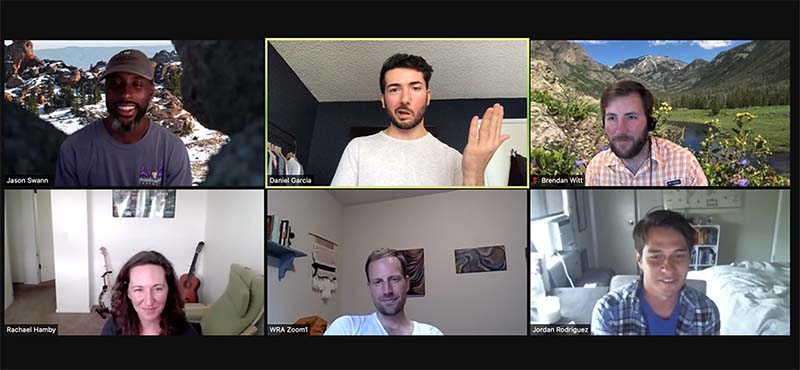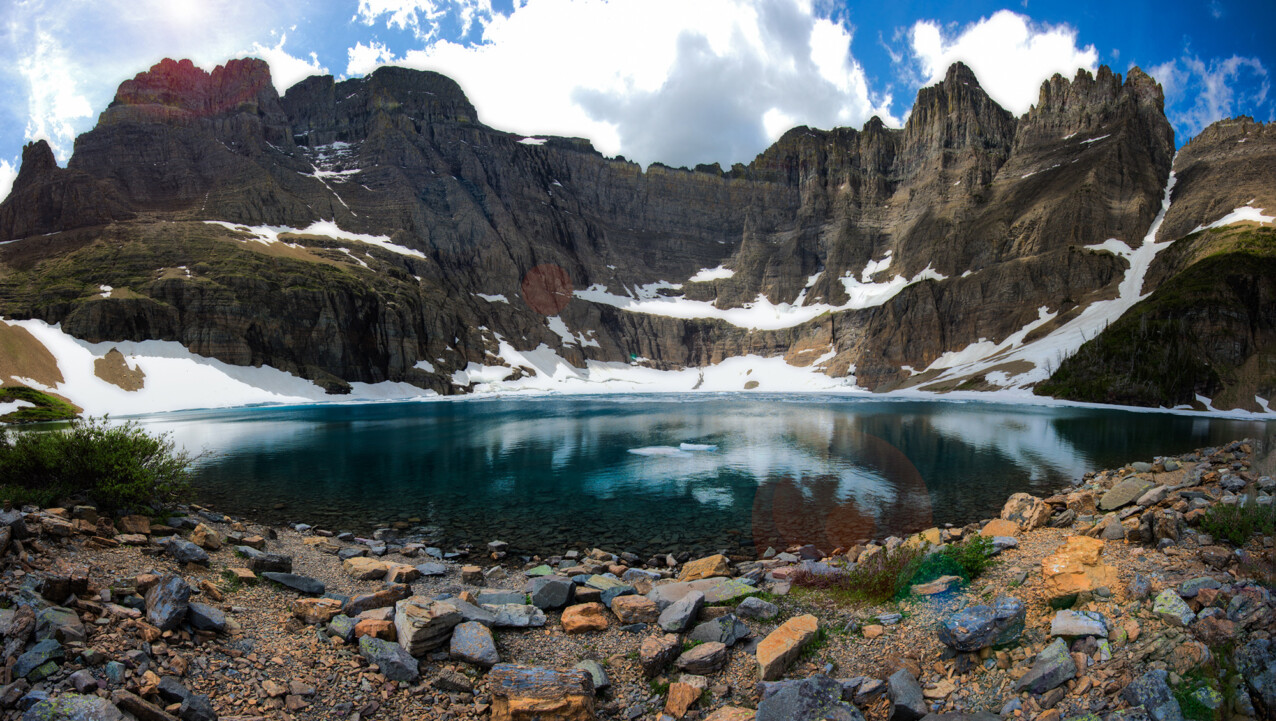August 30, 2021
The Start
My name is Daniel Garcia, and I’m a recent college graduate who just completed a virtual internship with the conservation nonprofit, Western Resource Advocates (WRA). I first became familiar with WRA on Twitter, where other groups and activists would retweet or interact with them. I was impressed with their work, and when they posted about open applications for summer internships, I applied immediately.
I graduated in 2020, and my internship with WRA spanned the summer of 2021. It was a full time; paid internship called the David Robertson Pathfinder Internship. The program was sponsored by Janet Robertson, in honor of her late husband, David. Under this program, I interned for the Lands team conducting policy research, writing memos, and attending advocacy meetings.
My internship was split into two parts. For the first half of the summer, my supervisor gave me a specific question that I researched. For the latter half, I was able to pick which research questions I wanted to look further into, and also completed smaller research projects.
My supervisor, Rachael, picked my research question after talks with a partner organization in Montana. They had discussed areas of interest, and had landed on the idea of further exploring state-level wilderness protections. My task was to research and summarize existing and proposed laws, regulations, and policies that could be replicated in Montana.
There are 111, 368,221 acres of federal wilderness, 97% of which is in Alaska.
The federal Wilderness Act of 1964 set up a national system of protecting land around the country. This Act can offer strong protections, but these designations can be hard to achieve. Congress is notoriously gridlocked, but the states can be champions of protecting their own wilderness.
A lot of land has been protected under this Act – over 111 million acres – but about 97% of that is just within the state of Alaska. This combination of hard-to-come-by designations and one state making up most of the land means that there is a lot that individual states can do to protect wilderness in their own borders.
This is where my research came in. WRA and its partners in Montana wanted me to look into what states were doing to protect wilderness within their borders. I was tasked to look at mostly Western states, and some on the East Coast, to see what they were doing, and what could be replicated in Montana.
The Research
I started my research by familiarizing myself with the federal 1964 Act. Once I understood more about it, I was able to formulate questions and identify gaps that states could fill. From there, I began to look at what other Western states were doing in this area. I focused on the West because their laws and geographic features are most similar to Montana. They share quirks like having more federal land within their borders, because they became part of the country more recently. For example, federal land makes up about 30% of the land in Montana, and almost 85% of the land in Nevada. This can make the goal of preservation much different than a state like New York, where there is less than half of one percent of federal land.
I read government agency websites, state-agency annual reports, statutes, bill texts, and studies. Slowly but surely, I was able to wrap my head around the dizzying array of ways that states protect their wilderness.
My supervisor, Rachael, and I would meet twice weekly. Our Monday meetings were used to set objectives for the week. She would check in with me about my progress, answer any questions, and forward calendar invites for relevant Zoom meetings for me to shadow. On Thursdays, I would give her a recap of my findings from the past week, in the form of short PowerPoint presentations. Not only was this useful for her, it also helped me when I eventually consolidated my research into a memo.

The Outcome
My research project resulted in a 40-page memo covering 9 states (Alaska, Arizona, Colorado, California, Montana, Nevada, New Mexico, New York, and Washington). I created a PowerPoint presentation highlighting my most interesting findings, and presented this information on a Zoom call to my supervisor and our partners in Montana. I included some of the most interesting findings below.
The state contains almost all of the federal wilderness land, but is also doing some interesting things at the state-level. The Kachemak Bay State Park and neighboring Kachemak Bay State Wilderness Park were created in the 1970s by the State Legislature and make up a total of 400,000 protected acres. This is an example of combining recreational and preservation areas side by side to create a combined protected area for the state.
The state contains State Natural Areas (SNAs), which are areas of land with “scientific, educational, and aesthetic value by reason of distinctive natural features”. These SNAs are overseen by the Natural Areas Program Advisory Committee (NAPAC), under the Arizona State Parks Board. NAPAC evaluates the suitability of properties for potential incorporation as a State Natural Area as part of the State Parks system. NAPAC is funded by the State Parks Heritage Fund, which in concept gets its monies from the state lottery though in practice these funds have been directed to other purposes since 2010. NAPAC has not met since 2017, resulting in no new State Natural Areas. Arizona’s experience demonstrates that these programs need a constant and stable source of funding to be effective.
The Colorado Parks and Wildlife Department manages the Colorado Natural Areas Program (CNAP). This statewide program was established in 1977, and recognizes or protects areas with “unique or high-quality natural feature of statewide significance”. These lands can be found on public or private land and are designated through land management agreements with landowners. CNAP covers180,024 acres across 95 designated sites and 11 registered sites.
Article XIV, Section 1, of the State Constitution contains language that the state’s forest preserve lands are to be kept “forever” wild. This strong language, combined with decades of developing their state conservation department, has resulted in a lot of preserved land for the Empire State. The New York Department of Environmental Conservation reports that there are 2.9 million acres of state forest preserve, over 800,000 acres of state forests, almost 200,000 acres of wildlife management areas, and over 900,000 acres of conservation easements. New York also uses an extensive classification system for its state lands, including my favorite: the “primitive bicycle corridor.”
The state manages 2.4 million acres of forested state trust lands. The state also designates Natural Resource Conservation Areas (NRCAs) and Natural Area Preserves (NAPs). Both designations protect animals and plants, and are used for scientific research or as outdoor classrooms. NRCAs cover over 125,000 acres across 39 sites, which often include geologic features, archaeological resources, or scenic attributes. NAPs protect native ecosystems and sensitive or rare species over 40,000 acres and 57 sites. NAPs typically have less developed public facilities and limited or guided access.
Washington also operates something called the Community Forest Trust Program. These lands are working forests that have significant value to local residents but are at high risk of being converted to non-forest uses. They are nominated by communities and purchased from private owners (if they are willing), or from state land trusts. Projects are approved by the State Parks Board and must be submitted to the legislature for funding.
The Conclusion
I really enjoyed my time with WRA. My favorite part of the internship was the research. My supervisor, Rachael, allowed me to explore many topics, but also guided me to make sure I didn’t go too far down any rabbit holes.
In addition to the research, I was also able to meet with many people in other departments. I talked with lawyers, research analysts, government affairs coordinators, and other interns. Talking with each of them gave me a fuller picture of what WRA does and how it fits into the broader world of conservation and politics. WRA fosters this environment where anyone can talk to everyone, and it contributed to my knowledge of the organization and the industry.
One of the best parts of my week would be my Monday meetings with Rachael. She had shared access to her calendar with me, and we would talk about meetings that might be relevant to shadow. This was made possible in part because most meetings were now virtual, and so joining was as easy as clicking on a Zoom link. Rachael would also share insight into what the meeting would be about, who and why they were attending, and share materials to give me background. Shadowing these meetings gave me insight into how nonprofits plan and coordinate with each other and state agencies.
My internship was completely virtual, which was both a blessing and a curse. On the upside, I was able to intern for a team mostly based in Colorado all the way from my home in Las Vegas, Nevada. Virtual internships are great because they expand the pool of eligible applicants. Whereas before I could only intern for WRA if I lived in a city where they have an office, now I can do it from anywhere. On the downside, I wasn’t able to interact with my team in person, or do quick chats by the water cooler. Emails and Slack direct messages are an okay substitute, but a quick chat would necessitate a Zoom invite and more planning. All in all, it was a great experience that gave me valuable experience and a taste of the nonprofit world.
I’d highly recommend WRA internships for anyone interested in conservation or nonprofit work. They offer experience and skill development in many of their departments. I loved working with my team and hope that everyone can get an experience like mine.


